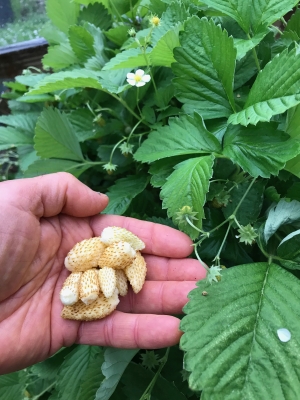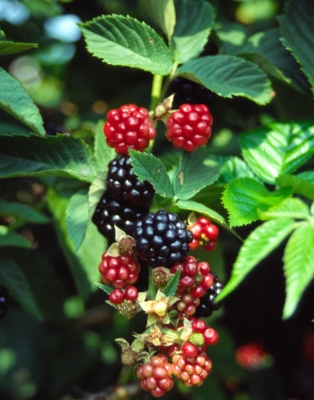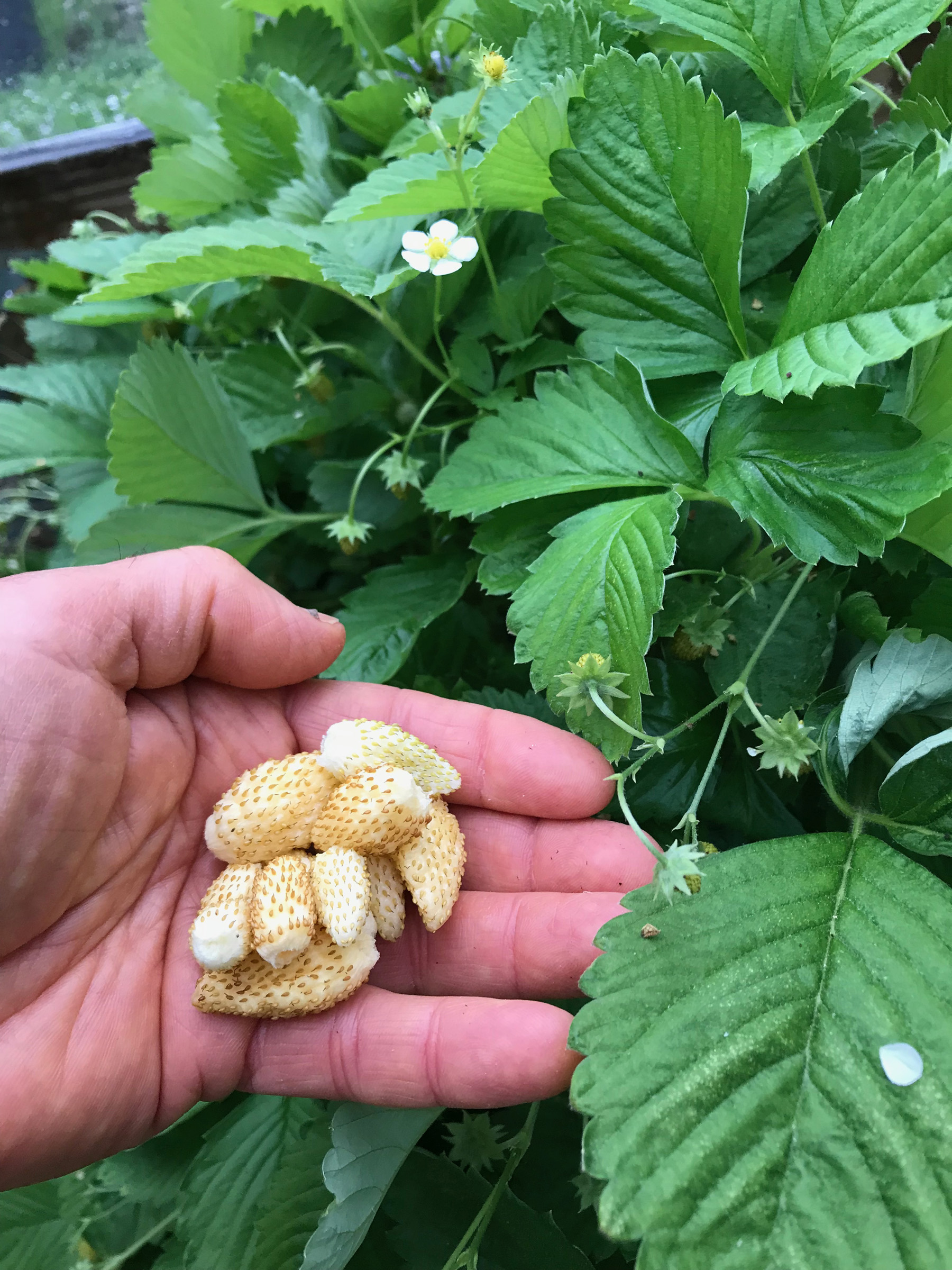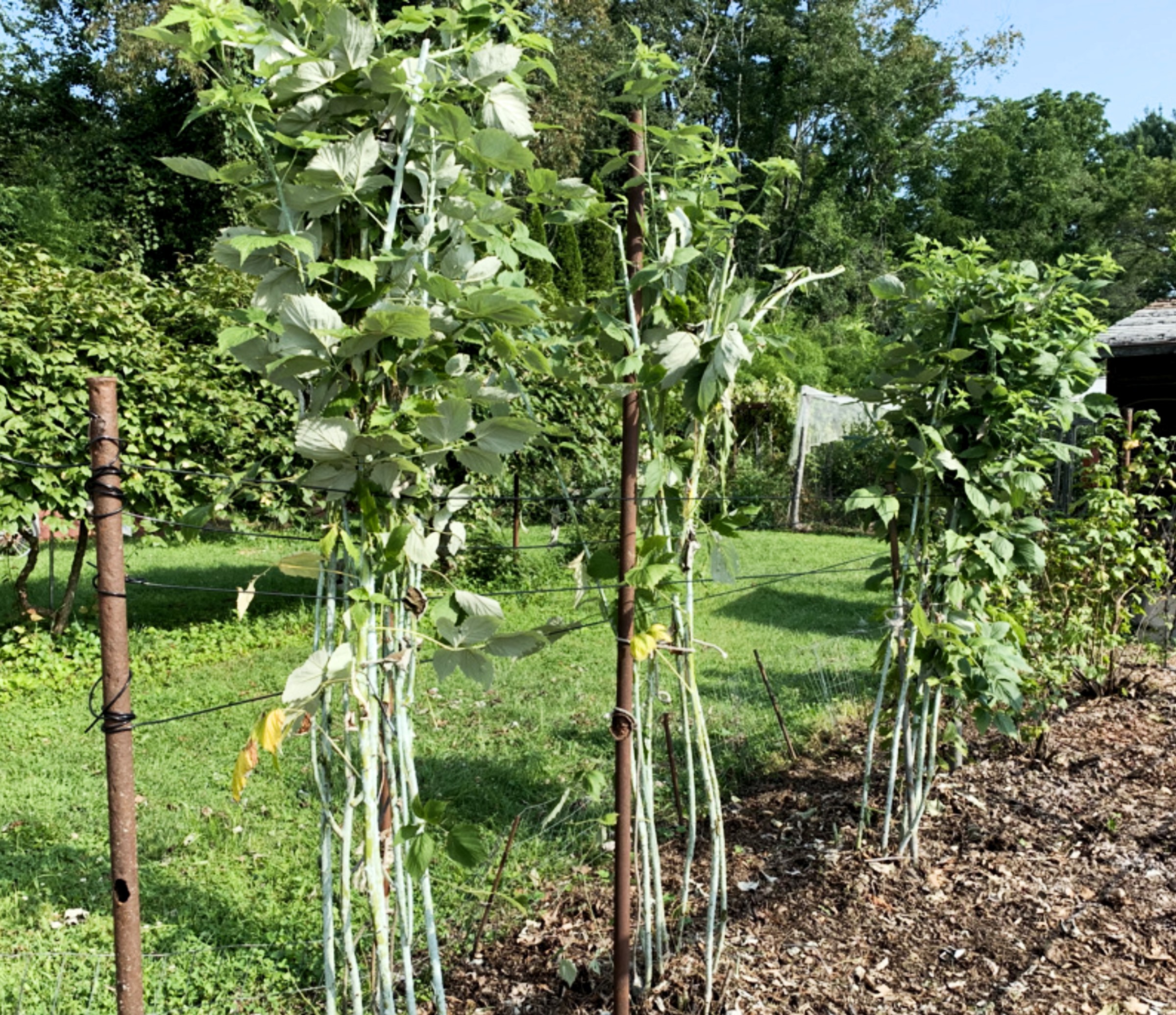RIPE FOR THE PICKING, BUT WHEN?
/10 Comments/in Fruit/by Lee ReichSubtle Messaging
I grow a kind of strawberry — the white alpine strawberry (Fragaria vesca) — whose flavor, when it is fully ripe, is an ambrosial melding of strawberry and pineapple. But if it’s even slightly underripe, it tastes like cotton soaked in lemon juice. How do I know when to pick a white strawberry? One way is with my nose, by the delectable aroma of a fully ripe fruit. The seeds also darken when the fruit is ripe.
Other types of fruits have their own ways of signaling when they are ripe, and to taste at their best, they must also be harvested at just the right moment. Many people mistakenly believe that any fruit can be picked underripe, then ripened on a kitchen counter. Softening does occur, and perhaps some changes in color and sweetness, but, with few exceptions, fruit picked underripe is no match for fruit fully ripened on the plant. That softening and sweetening is more akin to incipient rot than ripening. Read more
TWO BLACK BRAMBLES
/4 Comments/in Fruit, Pruning/by Lee ReichGood Stuff
What an unexpected treat this year. Black brambles galore. I choose my words carefully.
Over twenty years ago I grew blackberries, the variety Chester because it was the most cold-hardy variety of the thornless varieties, available at the time.  I finally gave up on Chester because winter cold would snuff out many of its canes down to ground level. If I remember correctly, surviving canes bore fruit that was too late in the season to ripen fully or in sufficient quantity. Read more
I finally gave up on Chester because winter cold would snuff out many of its canes down to ground level. If I remember correctly, surviving canes bore fruit that was too late in the season to ripen fully or in sufficient quantity. Read more
BACK TO THE FUTURE
/4 Comments/in Vegetables/by Lee ReichWhat’s Not to Like About Gardening
If there’s one thing that irks me about gardening, it’s the necessity for too often having to think to the future. Always living in the moment just doesn’t cut it if you want to garden well.
Yesterday, as I was swimming in a local lake enjoying, each time I turned my head for a breath of air, the sun beaming down on me and the view of cottony cumulus clouds hovering above green, forested mountains, my thoughts turned to autumn. I was reminding myself that now, in the summery middle of August, it was time to sow certain vegetable seeds.
Soon after getting back to the farmden, I filled a couple of small flats with potting soil. In the first, I made four mini-furrows, and sprinkled in seeds of Little Jade, Purple Express, and Blues napa cabbage, and Shuko Pac Choi cabbage, one variety per mini-furrow. Into the other flat went a mini-furrow each of Cos, Buttercrunch, Pirat, and Outredgeous lettuce seed.
Except for the lettuce, none of those Chinese cabbages appeals to me right now. But much of gardening entails not going with your gut (literally and figuratively in this case). Read more




